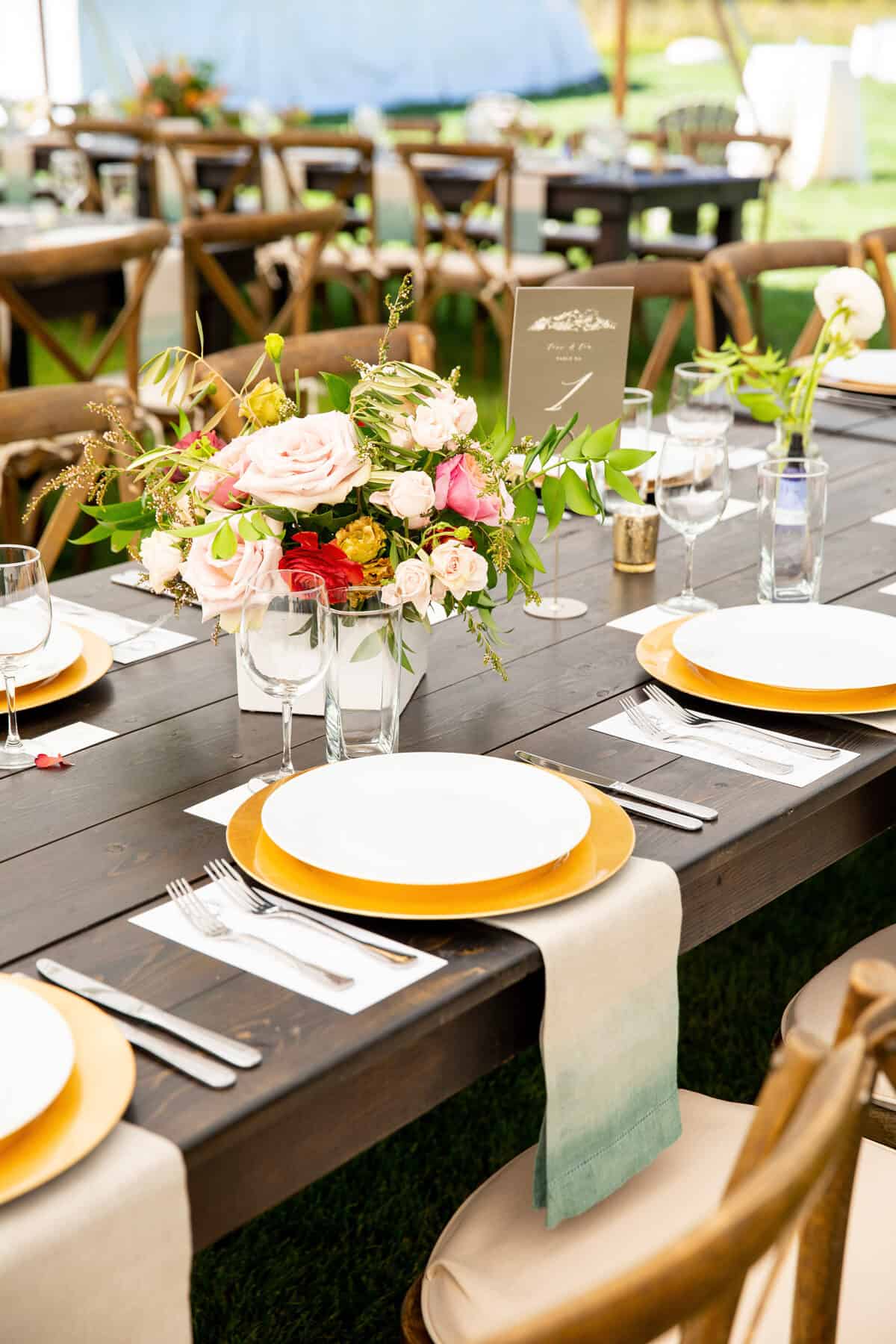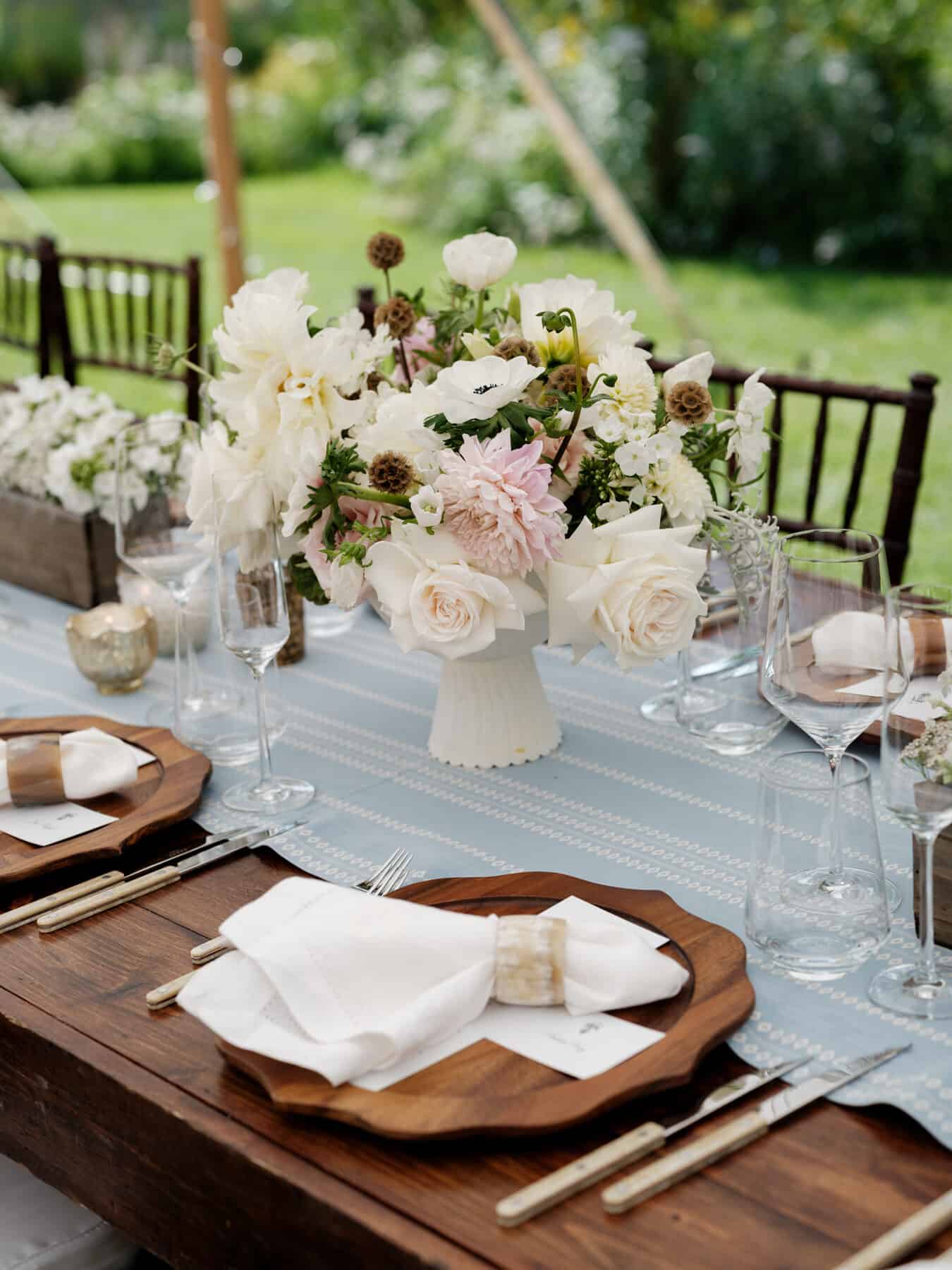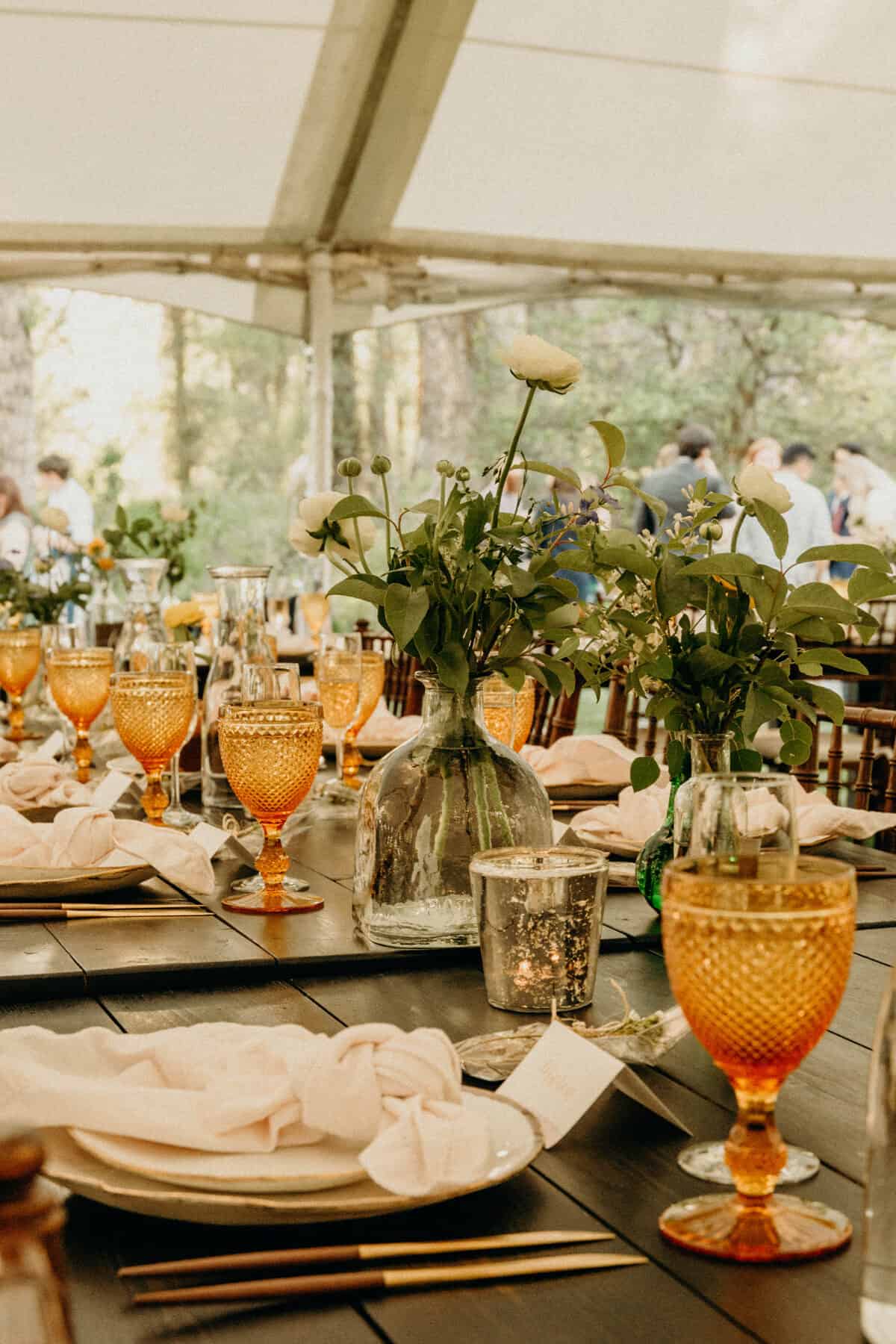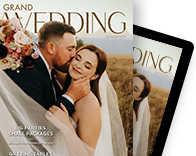Place-Based Tables
Place-Based Tables
Matching your table to your Teton wedding

The table. A communal nook meant to gather and hold. It’s a place where people share a meal and drink, alongside good conversation and laughter. Spending time on the details of this sacred space—one where you’ll come together to toast and celebrate the union of love—takes just as much thought as selecting your venue or designing your altar. Teton-based tablescapes tend to be simple, reflecting the landscape and giving guests a welcoming hug of seasonally-inspired natural elements.
Now, pulling off an organic tablescape—one that fits the aesthetic of both the place and couple—is an art form perfected by professionals. That’s why we consulted local vendors to bring you tips for matching your table to your Teton wedding.
“I think the biggest thing is to not overthink it,” says Virginia Symons, owner of Vibrant Events of Jackson Hole. “The reason you’re getting married in the Tetons is because the space has so much to add to your guest experience, so here, less is more. Half the job is already done in your backdrop.”


Seasonal
Keeping design elements seasonal adds personality to your event, so look to what’s happening in nature. In the spring, herbs and wildflowers begin to bloom, and during the summer, fruit is ripening on the branches. In the fall, the leaves are changing color and dried flowers come into play, and during winter, pears and evergreens can be used to bring in a wintry feel.
Sarah Seymour, florist and owner of Gild the Lily Too, sources flowers and other natural design elements from about five growers in the Teton Valley and Jackson Hole region. She notes that different growers provide different materials during certain times of the year. For everything else—she either grows it herself or forages it from nature.
For a spring or summer table, Seymour incorporates elements, like herbs tucked into napkins, or a stem of rosemary on the butter plate. Fall tables can include pampas grass, linens with raw edges, and candles of varying height.
“I’m a big fan of using leather twine or blades of dried grass instead of ribbon [year-round],” says Seymour. “It’s unexpected and it gives that organic, outdoorsy feel.”
Wedding planner Ashley Wold, of Wild Rose Weddings and Events, likes to incorporate gourds and pomegranates into a fall tablescape. She uses elements from nature, like river rocks, and even antlers, as a way to “play up the season, while also using what is available here in the valley.”
And Symons is drawn to looks that are timeless, incorporating a muted palate, birch bark (to match the local aspen trees), and wild sagebrush, also found locally throughout the summer. Symons says to rely on the resources you see in nature, as it “adds this additional element of place-basedness.” She also advises couples to “understand the environment you are working in and work with people who know that environment.”

Sourceable
“Stay with elements that speak to you, match your style, and come from next door to where your table is going to be set up,” says Symons.
Sourcing locally not only cuts down on the environmental footprint of your table’s décor, but it also assures items were grown with care by small farmers who make a difference. And you can integrate design elements that shout out local growers and your commitment, as a couple, to sustainability.
Seymour’s expertise lies in sourcing and visually bringing together a combination of color, texture, and variety in items that are not only grown locally, but also free of harsh chemicals and transported without using heavy trucking practices. She mentions that the pandemic’s abrupt change in culture has had an effect on design trends, too.
“There has been a huge global shortage of flowers due to supply-chain issues, and wholesale prices have skyrocketed,” she says. “Fortunately, couples are being more mindful with their guest list, how dollars are spent, and where they spend their dollars.”
In today’s climate, it’s often less expensive for budget savvy couples to source their products locally, use repurposed items in their design elements, or even do without. Wold likes to use bare wood farm tables, which eliminates the need to rent or buy expensive linen tablecloths, and also matches the vibe of a mountain-based wedding. Seymour had a bride from Pinedale (with Native American roots) bring her a whole bag of pheasant feathers to incorporate into the bouquet, her headpiece, and table centerpieces.
Wold advises couples to consider a locally-inspired menu, as well, as it adds a sense of community to their wedding. Serving food items, like locally-caught trout, medallions from buffalo raised on a local ranch, vegetables and greens from regional farms, and beer from neighborhood breweries gives guests something to talk about once they return home.


Practical
Symons urges couples to not just think about where their design elements are coming from, but also where they’re going to go.
“When the celebration is over, are [items] going into the compost, the dumpster, or to someone’s home?” she asks. “I make sure that [the organic materials I use] go back to the garden they came from, so that there’s a circle of life element to it.”
All the vendors like to incorporate food into the design elements, giving it a second purpose. Symons likes family-style food service, with long tables and beautiful platters. She suggests having your caterer and florist work together, so that when the food is taken away, the look still remains. She integrates items like wooden boards, vintage silverware, and suggests tapas-style meals to provide a variety of different textures and heights that move around the table. “Your décor becomes interactive this way,” she says.
Seymour likes to use elements that match the personalities of the couple. For instance, she once used crystals and geodes, in shades of blush and wine tones, on a table for a wedding where the groom was a geologist.
“We placed a small piece of crystal on each menu card in place of a paperweight,” she explains. “We broke geodes in half, and tucked them flowers. The crystals refracted the light and gave a glittery feel to the dinner table.”
When planning your Teton tablescape, Symons says to trust your gut and don’t get hung up on tiny details. “If there’s something that’s not available seasonally, or is outside of your budget, take a deep breath and move on,” she says. “We’re in the business of making memories, so in that respect, less is more.”
